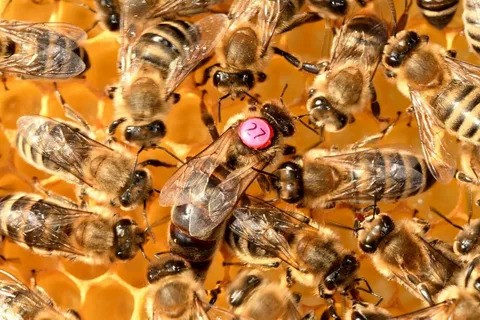
Steps to Take When the Queen Bee Dies in Your Beehive
The queen bee is essential for maintaining hive stability and productivity. When the queen bee dies, it can create a crisis within the hive. Knowing how to manage this situation is crucial for any beekeeper. In this article, we’ll discuss the steps to take when the queen bee dies, from recognizing the signs early to successfully requeening the hive. Additionally, wearing proper beekeeping suits is essential during hive inspections and management to ensure your safety and comfort while handling the bees.
Recognizing the Signs of a Dead Queen Bee
Common Indicators
Early detection of a dead or dying queen bee is vital for effective hive management. Signs to look for include:
- Decreased Egg Laying: A noticeable drop in the number of eggs laid can indicate a failing queen.
- Erratic Behavior: Workers may exhibit unusual behavior or increased aggression.
- Queenless Roar: A distinctive change in the sound of the hive, often louder and more chaotic.
- Multiple Emergency Queen Cells: Workers may start building numerous queen cells in a frantic attempt to rear a new queen.
Importance of Early Detection
Early detection allows for timely intervention, reducing the risk of colony collapse. Regular hive inspections and being attuned to changes in hive behavior can help you spot problems early.
Immediate Actions to Stabilize the Hive
Emergency Beekeeping Steps
When you confirm that the queen bee has died, take immediate steps to stabilize the hive:
- Calm the Colony: Use a smoker to calm the bees and minimize stress.
- Assess the Situation: Inspect the hive thoroughly to confirm the absence of the queen and evaluate the state of the colony.
- Remove Emergency Queen Cells: If the colony is not suitable for rearing a new queen, remove emergency queen cells to prepare for introducing a new queen.
Ensuring Health and Safety
Ensure the hive is free from pests and diseases that could exacerbate the crisis. Provide adequate food and maintain optimal hive conditions to support the bees during this stressful period.
Preparing for Queen Replacement
Assessing the Hive's Readiness
Before introducing a new queen, assess the hive's readiness:
- Colony Size: Ensure the colony is strong enough to support a new queen.
- Worker Bee Behavior: Observe the workers for signs of readiness to accept a new queen.
Removing Emergency Queen Cells
If the colony is not ready to rear a new queen on its own, remove any emergency queen cells. This prepares the hive for the introduction of a new queen from an external source.
The Requeening Process
Choosing a New Queen
Selecting a new queen is a critical step in requeening:
- Select a Healthy Queen: Choose a mated queen from a reputable source. Ensure she is healthy and vigorous.
Introducing the New Queen
Follow these steps to introduce the new queen:
- Queen Cage: Place the new queen in a queen cage with a candy plug. Insert the cage into the hive.
- Monitor Acceptance: Allow the workers time to accept the new queen. They will chew through the candy plug, gradually releasing her.
- Observe Behavior: Watch for signs of acceptance or rejection. If the workers are aggressive towards the cage, more time is needed.
Managing Hive Dynamics During Requeening
Observing Worker Bee Behavior
Worker bees may exhibit varied behaviors during requeening. Understanding these behaviors can help manage the hive effectively:
- Initial Aggression: Some initial aggression towards the new queen is normal. Use a queen excluder if necessary to protect the new queen.
- Feeding and Care: Once the new queen is accepted, workers will feed and care for her, indicating successful integration.
Monitoring the Hive
Regular monitoring is crucial during this period. Check for signs of successful queen introduction:
- Egg Laying: The new queen should start laying eggs within a week.
- Calm Behavior: The hive should return to normal activity levels, indicating reduced stress.
Long-Term Strategies for Hive Health
Regular Inspections and Monitoring
After successfully requeening, focus on long-term hive health:
- Regular Inspections: Continue regular hive inspections to monitor the queen's performance and overall hive health.
- Pest and Disease Control: Implement regular pest and disease control measures to maintain a healthy hive environment.
- Nutrition: Ensure the hive has a consistent food supply, especially during periods of scarcity.
Preventative Measures
Implement preventative measures to avoid future crises:
- Queen Monitoring: Regularly check the queen's health and productivity.
- Genetic Diversity: Consider using queens from diverse genetic lines to enhance colony resilience.
Practical Tips for Beekeepers
Additional Tips for Managing a Hive Through the Crisis
Managing a hive through the crisis of losing a queen bee requires practical beekeeping skills:
- Stay Calm: Bees can sense your stress. Approach the hive calmly and methodically.
- Educate Yourself: Continuously educate yourself on beekeeping practices and crisis management.
- Seek Support: Join local beekeeping communities or forums for support and advice.
Common Mistakes to Avoid
Avoid these common mistakes to ensure a smooth transition:
- Rushing the Process: Give the hive time to accept the new queen. Patience is key.
- Neglecting the Hive: Regular care and monitoring are essential, especially during requeening.
- Ignoring Signs of Rejection: If the bees reject the new queen, act quickly to introduce another queen or support the hive through other means.
Conclusion
When the queen bee dies, it can create a significant challenge for your hive. By following these steps—recognizing the signs of a dead queen, stabilizing the hive, preparing for queen replacement, and managing the requeening process—you can navigate this crisis effectively. Long-term strategies for hive health and practical beekeeping tips can help ensure your hive remains healthy and productive. Implement these strategies, along with using the right beekeeping gears, to manage your hive through the crisis and maintain its stability and productivity.
